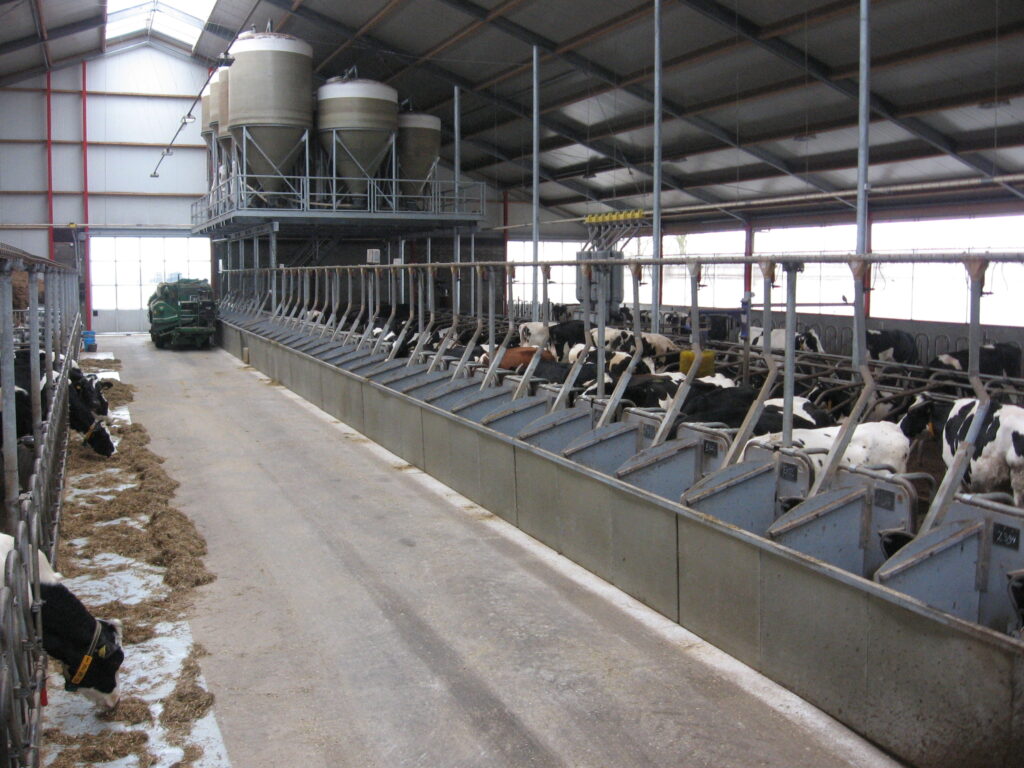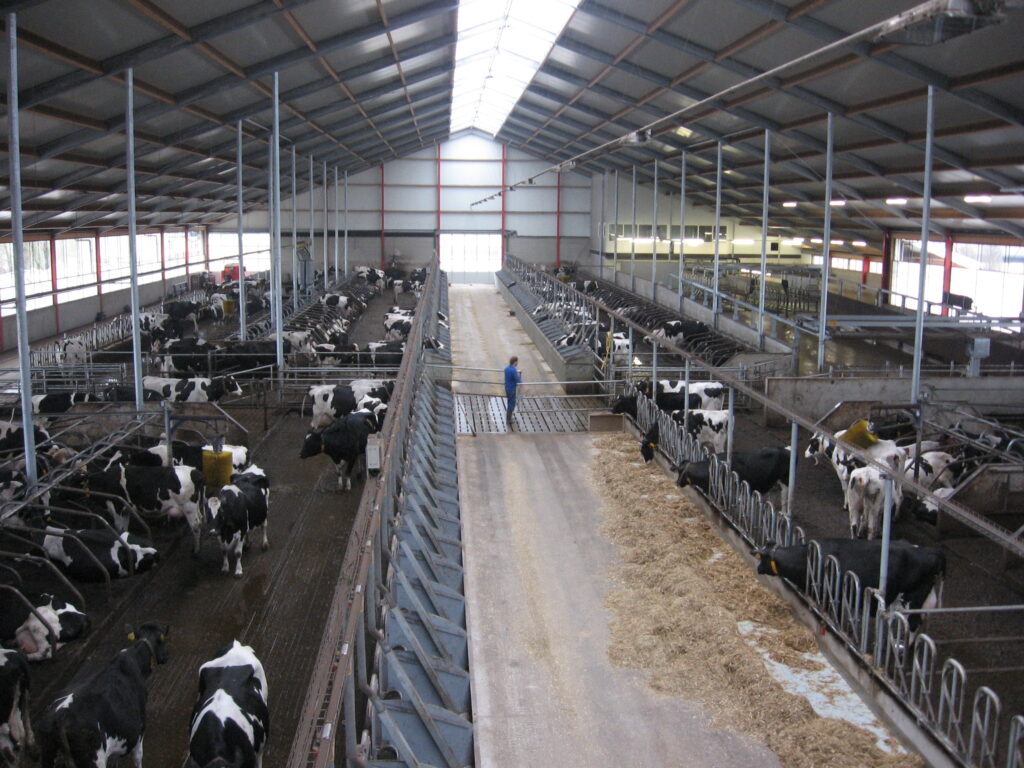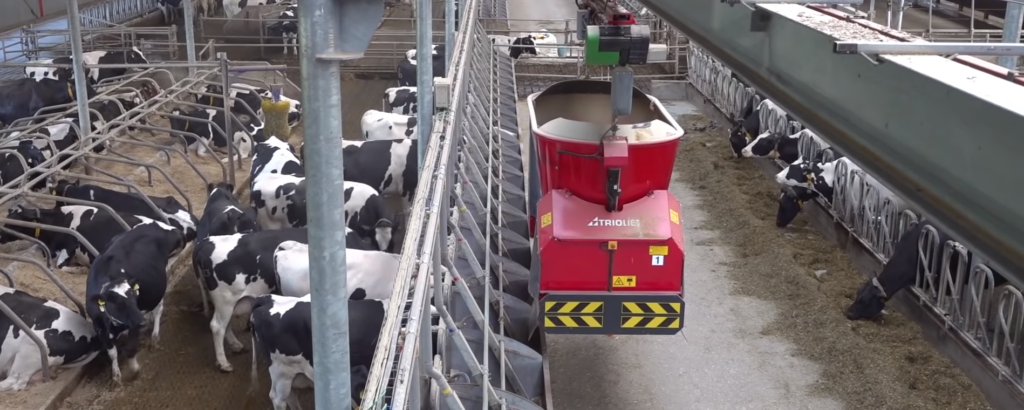Ruminants
In cattle, research can be conducted on dairy cows and young cattle. Generally, the research focuses on the production, health, and sustainability of the animals. In recent years, a lot of research has also been conducted on different feed crops and preservation methods. SFR has a dairy herd of over 230 high-yielding dairy cows in a modern freestall barn, as well as approximately 150 head of young cattle housed in various age groups from around 14 days old.
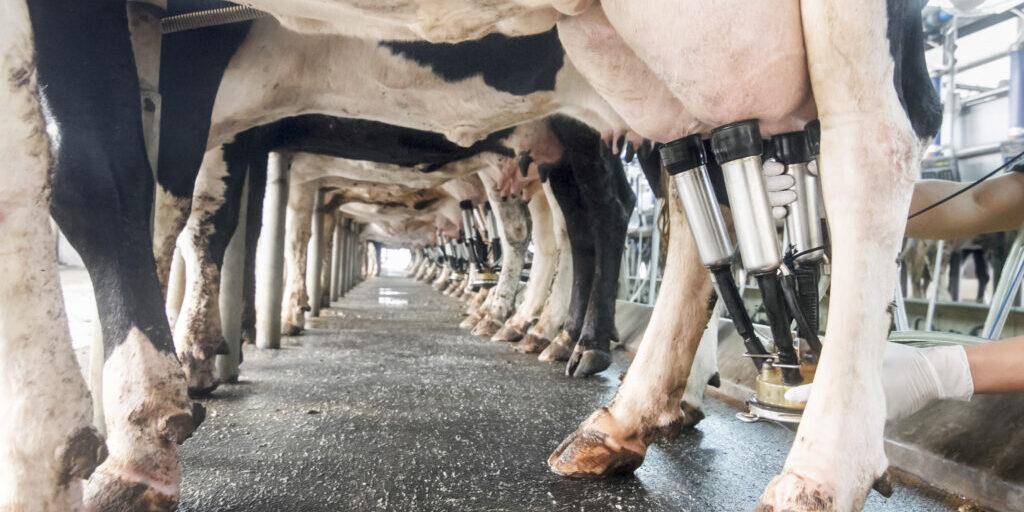
The average age of the dairy herd is 5 years, and the herd achieves a rolling annual average of over 10,000 kg of milk with a fat content of approximately 4.40% and a protein content of over 3.50%. The freestall barn is designed in such a way that the individual intake of forage and concentrate feed of over 120 cows can be determined. This is done using an RFID-controlled Calan® system with individual access to the feed troughs. This allows reliable research to be conducted at the individual animal level. The aim is to soon also perform daily methane measurements in these feed troughs. Despite all the special facilities, the research is carried out under practical conditions as much as possible.
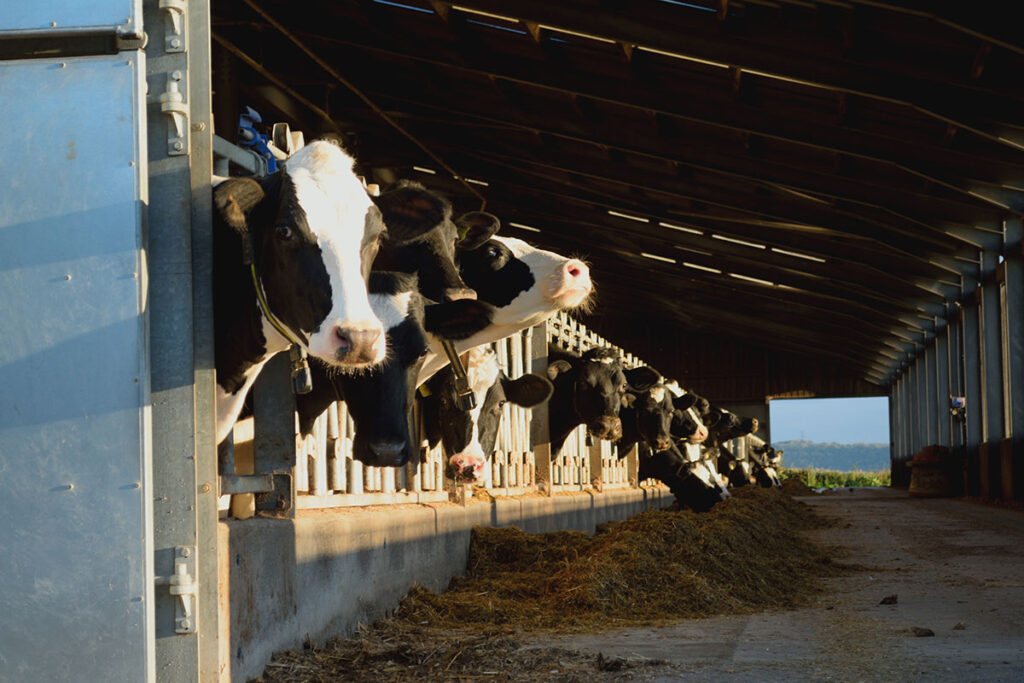
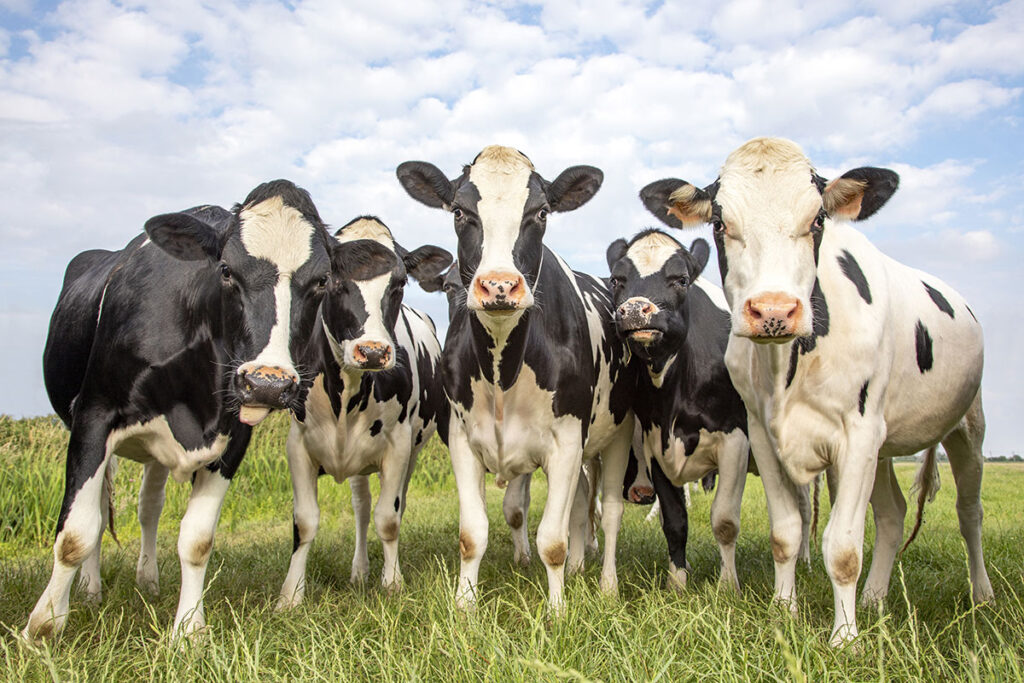
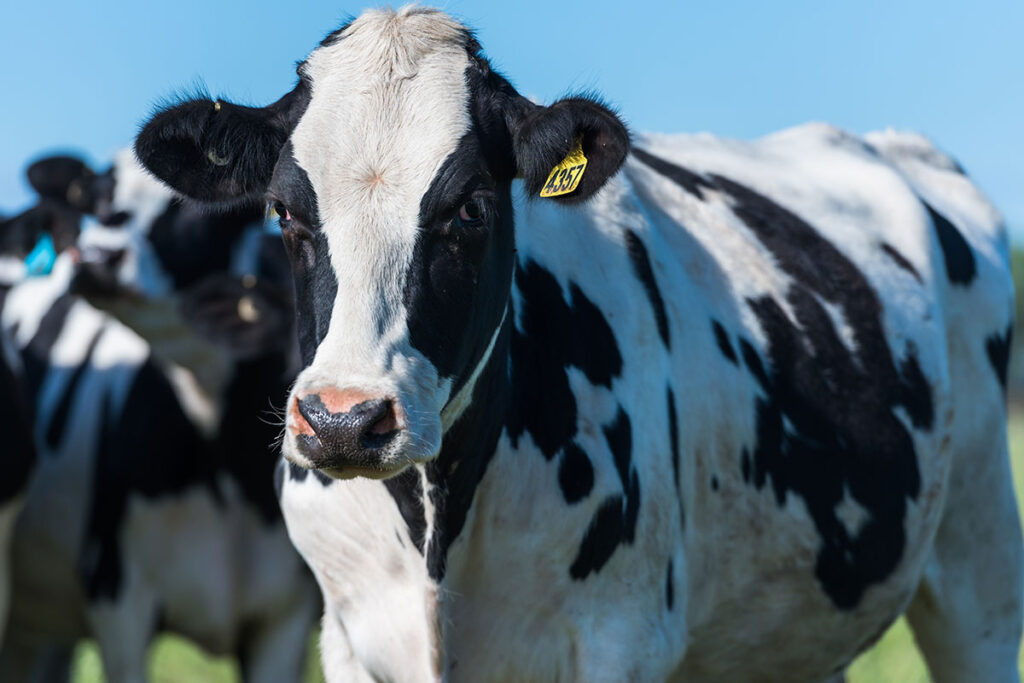
For young cattle, SFR can measure the effect of a feeding strategy. This allows us to determine the influence of calf milk, concentrate feed supply, and additives on various production data (including weight, growth, and feed intake). It also helps us understand the impact this has on their later life as dairy cows. SFR has over 150 calves and heifers. The animals are housed in different age groups from 14 days old and fed through automated milk feeders until approximately 3 months of age. Up to three months, the animals are kept in groups on straw bedding. After that, they are housed in freestalls. SFR has the data of all its animals in an online database, enabling the investigation of connections between multiple generations or different feeding strategies.
It is possible to have the following types of examinations performed:
Feed surveys
Feeding studies determine the effect of forage quality, concentrate composition or supply and additives on feed intake, milk production and milk composition, among other things. Download fact sheet “Feeding experiments for dairy cows.
Penile physiological research
In rumen physiological research the effect of roughage quality, concentrate composition or supply and additives is determined, on different rumen parameters (e.g. pH, volatile fatty acids, ammonia, continuous pH measurement). Download factsheet ‘Rumen physiological studies’.
Feed value determination
Feed value analysis is one of the pillars of SFR. We have several possibilities to determine the feed value of a product (in vitro methods, in situ incubation nylon bags, in vivo studies). The research focus includes determining the feed value of concentrate raw materials, roughages or moisture-rich animal feeds. The determination of E-dairy® (SFR feed value) also requires feed value research. This is done via In vitro gas production test, In situ nylon bag incubation or In vivo digestion studies.
Direct acceptance test
Good acceptance of concentrates is essential for high-producing cows. Both raw materials and additives can affect concentrate palatability. The direct acceptance test is used to determine the influence of raw material or additives on the acceptance of concentrates.
Practical research
To study the effects on, for example, health and fertility, it is important to follow the cows over a long period of time. For such research SFR uses selected dairy farms. Download factsheet ‘Health and fertility’.
Registration research
To support a registration dossier, tests are needed to demonstrate that an additive works well and has no adverse effects on human and animal health. SFR can perform these tests for you.
Data research
To investigate relationships between multiple generations or across different feeding strategies, SFR has compiled data from all animals into one large database.
